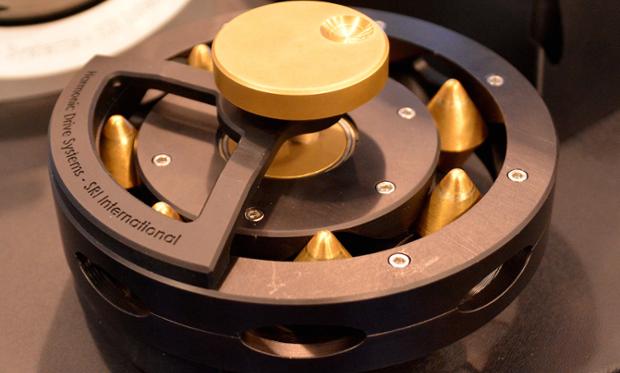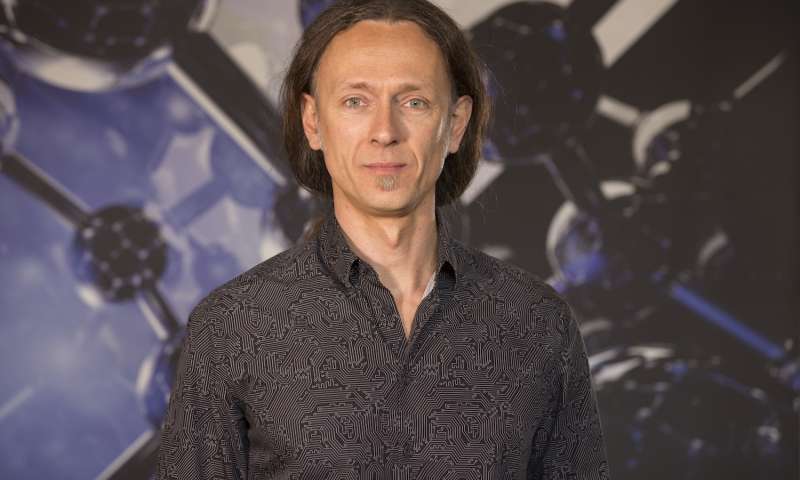NASA is funding the development of engineered bugs that eat and excrete metal.



Combination therapy to kick cancer to the curb!
Harnessing the body’s own immune system to destroy tumors is a tantalizing prospect that has yet to realize its full potential. However, a new advance from MIT may bring this strategy, known as cancer immunotherapy, closer to becoming reality.
In the new study, the researchers used a combination of four different therapies to activate both of the immune system’s two branches, producing a coordinated attack that led to the complete disappearance of large, aggressive tumors in mice.
“We have shown that with the right combination of signals, the endogenous immune system can routinely overcome large immunosuppressive tumors, which was an unanswered question,” says Darrell Irvine, a professor of biological engineering and of materials science and engineering, and a member of MIT’s Koch Institute for Integrative Cancer Research.

I know, it doesn’t seem like there’s any possible way that a transmission system could be interesting enough that we’d dedicate an entire article (and video!) to it. But here we are: As soon as SRI explained how their new Abacus transmission worked, we were absolutely sure that it was cool enough to share. In a nutshell, here’s why: It’s the first new rotary transmission design since Harmonic Drive introduced its revolutionary gear system in the 1960s*, and it might give harmonic gears a literal run for their money.
The physics of most electric motors generally dictates that the motors are happiest when they’re spinning very fast. Unless you want to use them to simply spin a thing very fast, you’ll need to add a rotary transmission that can convert low torque, high speed rotation into higher torque, lower speed rotation. If you’ve got the budget, the way to do this is with a high-performance harmonic gear like the ones offered by Harmonic Drive. Roboticists like harmonic gears because they are compact, have high gear ratios, and, perhaps most important, don’t have backlash, which is essentially the amount of wiggle room that you get with conventional gear-based transmissions. In robotic applications, wiggling means that you don’t know exactly where everything is all the time, making precision tasks something between irritating and impossible.
Harmonic gears are great, but they’re also superduper expensive, because they require all kinds of precision machining. Alexander Kernbaum, a senior research engineer at SRI International, has come up with an entirely new rotary transmission called the Abacus drive, and it’s a beautiful piece of clever engineering that offers all kinds of substantial advantages:

A new design for solar cells that uses inexpensive, commonly available materials could rival and even outperform conventional cells made of silicon.
Writing in the Oct. 21 edition of Science, researchers from Stanford and Oxford describe using tin and other abundant elements to create novel forms of perovskite — a photovoltaic crystalline material that’s thinner, more flexible and easier to manufacture than silicon crystals.
“Perovskite semiconductors have shown great promise for making high-efficiency solar cells at low cost,” said study co-author Michael McGehee, a professor of materials science and engineering at Stanford. “We have designed a robust, all-perovskite device that converts sunlight into electricity with an efficiency of 20.3 percent, a rate comparable to silicon solar cells on the market today.”

Watching millions of neurons in the brain interacting with each other is the ultimate dream of neuroscientists! A new imaging method now makes it possible to observe the activation of large neural circuits, currently up to the size of a small-animal brain, in real time and three dimensions. Researchers at the Helmholtz Zentrum München and the Technical University of Munich have recently reported on their new findings in Nature’s journal ‘Light: Science & Applications’.
Nowadays it is well recognized that most brain functions may not be comprehended through inspection of single neurons. To advance meaningfully, neuroscientists need the ability to monitor the activity of millions of neurons, both individually and collectively. However, such observations were so far not possible due to the limited penetration depth of optical microscopy techniques into a living brain.
A team headed by Prof. Dr. Daniel Razansky, a group leader at the Institute of Biological and Molecular Imaging (IBMI), Helmholtz Zentrum München, and Professor of Molecular Imaging Engineering at the Technical University of Munich, has now found a way to address this challenge. The new method is based on the so-called optoacoustics*, which allows non-invasive interrogation of living tissues at centimeter scale depths.

There are two kinds of people in Washington, DC, says entrepreneur Dean Kamen. There are the policy experts, whom he calls cynics. And there are the scientists, whom he deems optimists.
Kamen, speaking at the White House Frontiers Conference at the University of Pittsburgh, places himself in the latter camp. Unlike policy wonks and politicians who see diseases like Alzheimer’s or ALS as unstoppable scourges, Kamen points out that previously terrifying diseases were all toppled by medical innovation. The plague, polio, smallpox — all were civilization-threatening epidemics until experimental scientists discovered new ways to combat them.
If that sounds like the kind of disruption that the tech industry has unleashed across the rest of the world, that’s no accident. Kamen, the founder of DEKA, a medical R&D company, says that the same trends that have empowered our computers and phones and communication networks will soon power a revolution in health care. He says that medical innovation follows a predictable cycle. First we feel powerless before a disease. Then we seek ways of treating it. Then we attempt to cure it.

Leading Australian engineer and physicist, Professor Andrea Morello, was today named inaugural recipient of the Rolf Landauer and Charles H. Bennett Award in Quantum Computing by the prestigious American Physical Society, the world’s leading organisation of physicists.
Morello, a professor in UNSW’s School of Electrical Engineering & Telecommunications and head of the Quantum Spin Control group at the Centre for Quantum Computation and Communication Technology, was awarded the prize “for remarkable achievements in the experimental development of spin qubits in silicon”.
The prize, endowed by the International Business Machines Corp, is named for two of the founding fathers of modern information science, both classical and quantum.

Whenever we lose someone close to us, there’s an inclination, a need even, to sort through our memories of that person. Memories not just in our minds, but our digital memories too—emails, texts, photos, videos, social media posts.
But eventually, we have to stop looking through those texts and photos, because after a while, it’s like listening to a song on repeat for too long. The memories are static, they will never change, shift, and grow like the real person, and you just have to move on.
When Eugenia Kuyda lost her best friend, Roman Mazurenko, she wanted to memorialize him in a different way. As the cofounder of Luka, an artificial intelligence startup which recommends books and restaurants through a chat interface, Kuyda worked with her engineering team to collect thousands of Mazurenko’s texts and create a chatbot based on his personality.

Check this out.
Engineers at the University of Massachusetts Amherst are leading a research team that is developing a new type of nanodevice for computer microprocessors that can mimic the functioning of a biological synapse—the place where a signal passes from one nerve cell to another in the body. The work is featured in the advance online publication of Nature Materials.
Such neuromorphic computing in which microprocessors are configured more like human brains is one of the most promising transformative computing technologies currently under study.
J. Joshua Yang and Qiangfei Xia are professors in the electrical and computer engineering department in the UMass Amherst College of Engineering. Yang describes the research as part of collaborative work on a new type of memristive device.

Boston-based startup completes $23 million Series A financing to leverage novel imaging platform of gene locations towards gaining diagnostic insights and delivering therapeutics for cancer, immuno-oncology, infectious diseases, neurological and neuromuscular diseases, brain function and cognitive disorders
BOSTON—(BUSINESS WIRE)—ReadCoor, Inc., today announced completion of an oversubscribed $23 million Series A financing round and its concurrent launch from Harvard University’s Wyss Institute for Biologically Inspired Engineering. ReadCoor will commercialize the Wyss Institute’s FISSEQ (fluorescent in situ sequencing) technology.